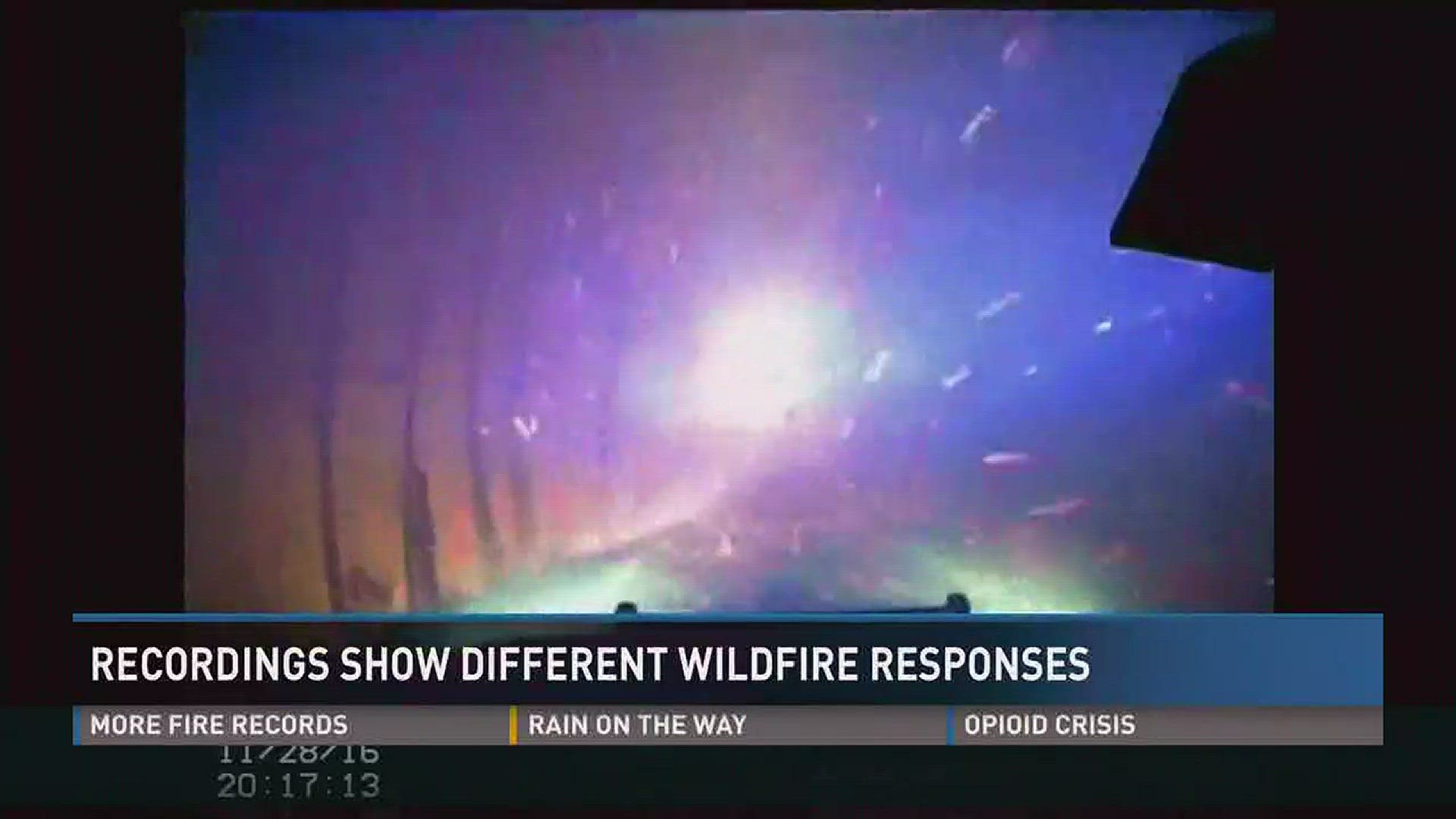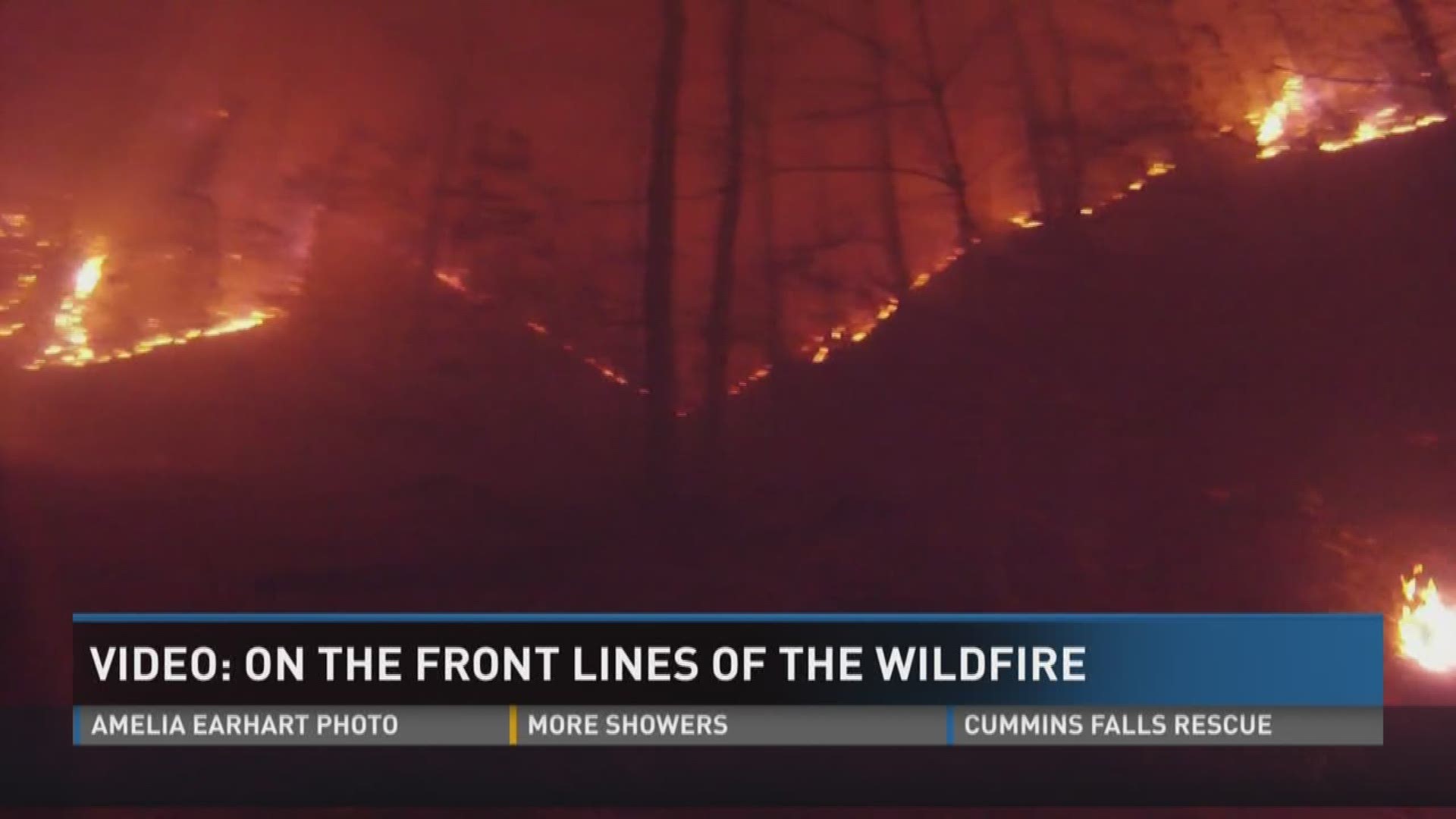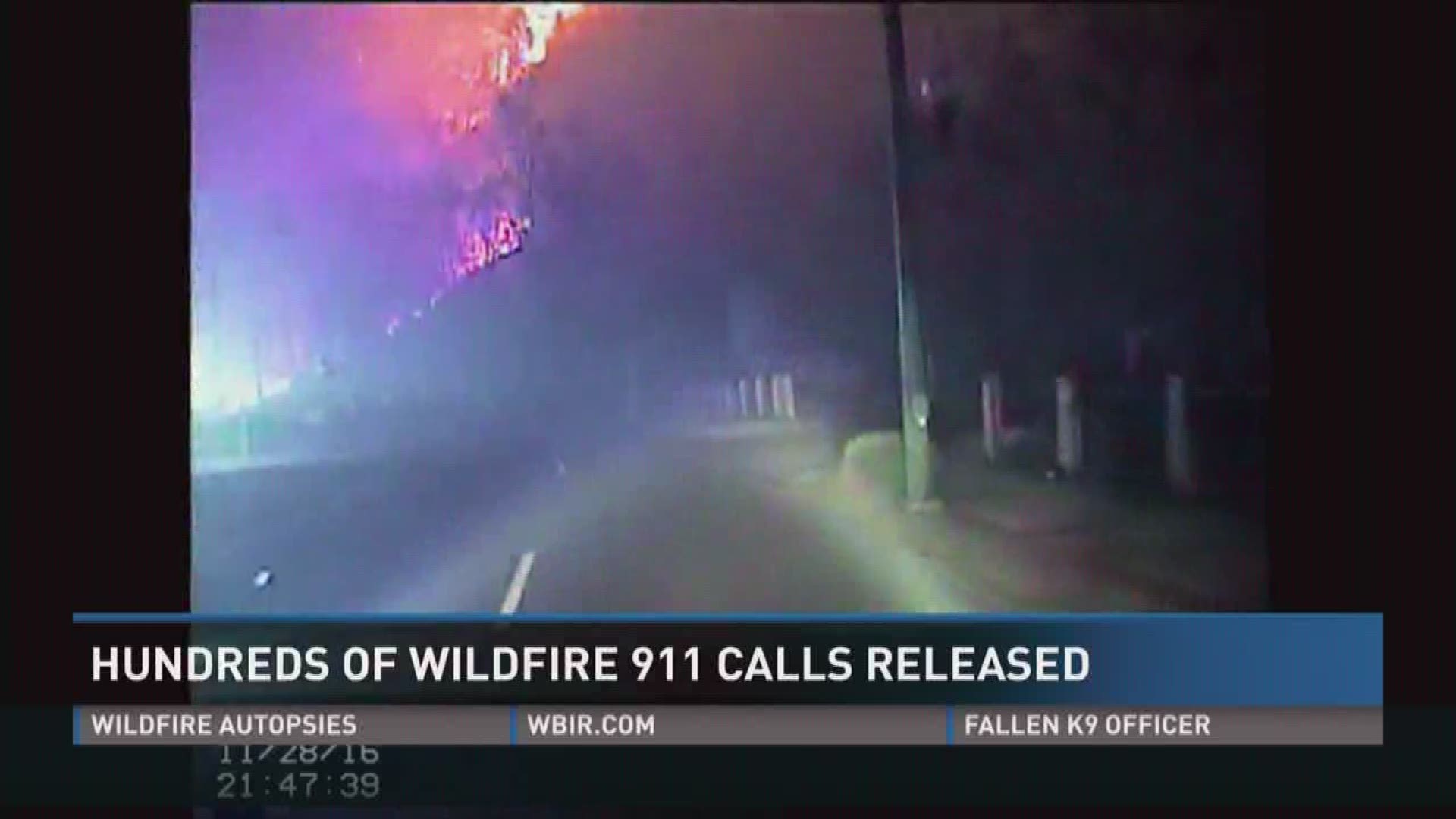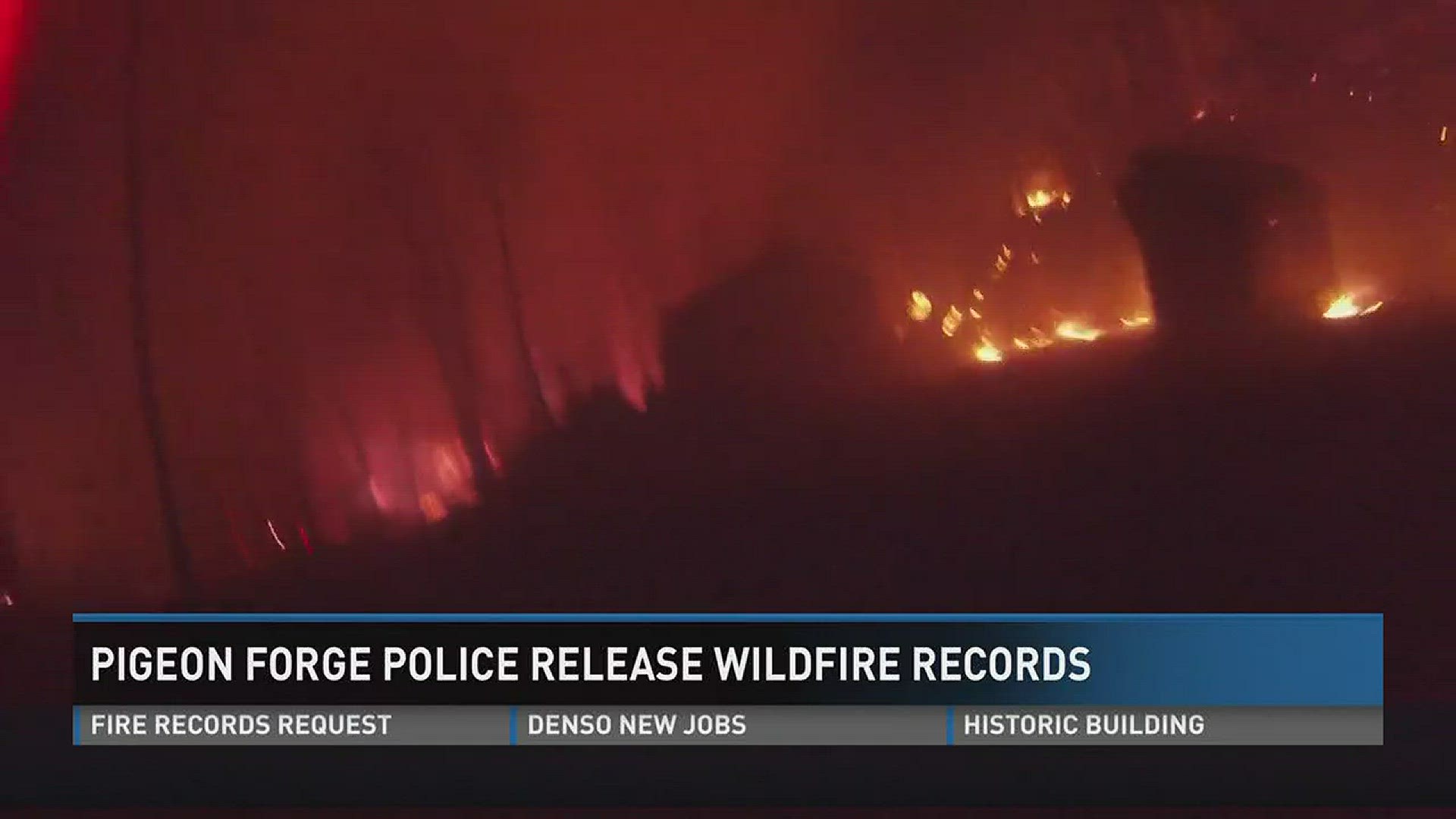WBIR is reviewing thousands of 911 and radio calls, emails and documents from Sevier County and Gatlinburg from the night and days after the wildfires, the result of an open records request.
More than 14,000 people fled the Gatlinburg area on the night of Nov. 28, 2016, as a fire that started inside Great Smoky Mountains National Park days before spread into populated areas. Fourteen people were killed.
Autopsy Reports
10News also received autopsy reports for 13 of the 14 people killed in the fires. The documents, from the Knox County Regional Forensic Center, offer the primary cause of death for the victims.
May Vance, who suffered a heart attack during the fire, was not included in the records released to 10News. She died two days after the storm.
Most victims died of what the medical examiner described as "inhalation of the products of combustion" or smoke inhalation. Many suffered severe burns, and most were identified by dental records.
In the case of 71-year-old John Tegler, the medical examiner believes he collapsed of a heart condition and was struck by a car.
Four reports have been revised – Alice Hagler, Robert Hejny, Pamela Johnson and Joe Summer. All cite smoke inhalation as the primary cause of death, but include a July 24 addendum: “Based on the additional investigative information presented by the Tennessee Bureau of Investigation, as of July 24, 2017, the manner of death is reclassified as undetermined.”
It’s unclear if anything was deleted from the report when that edit was made.
Bodycam Footage Shows Heroism
Hours of body and dash camera footage from Gatlinburg Police show officers braving the wind and fire to evacuate residents.
Officers drive through neighborhoods shouting evacuation orders into the loudspeaker. In other sections, they jog down rows of cabins, knocking on doors to warn confused residents.
“Everybody has got to evacuate, go towards Newport,” one officer says to a family in their pajamas.
Sometimes, the fire is visible just across the street from evacuations. At other points, they run down apartment and hotel hallways banging on doors.
“Can you make it up the stairs?” the officer asks an older man.
“I’ll try,” he responds.
“Alright, I’ll help you,” the officer responds.
Moments later, he radios in: “I’ve got a couple over here in a wheelchair, these few are coming out and got a couple dogs.”
He turns to the group, and says a ride is on the way.
911 Calls
Early 911 and dispatch calls reveal concern as police officers and firefighters worked to track the progress of the fire and the weather conditions in the area. Dispatchers made contact with the National Weather Service to get an update on the forecast, which called for increasing winds as the night progressed.


As of 4 p.m., officers reported winds already gusting at about 40 miles per hour, and very low visibility in town. The dispatcher also told the meteorologist at the NWS that the fire was already creeping closer to town, and that Tennessee Division of Forestry firefighters were cutting lines around the Park Vista hotel to keep the fire from spreading into residential areas. By 4:15 p.m., firefighters were being dispatched to "pretreat" houses in the Turkey Nest area, as the fire edged closer to that neighborhood and the Mynatt Park area.
Crews in the field also reported some communication difficulty with first responders so spread out.
Dispatchers and emergency crews were very busy throughout the evening. As the winds increased, more calls came in to 911 reporting trees falling into power lines, sparking fires around the area and blocking roads. Getting crews to those fires was difficult because some of the callers were visitors and unfamiliar with the area.
In the early hours, between 5 and 6 p.m., several calls came in to 911 from elderly or disabled residents who wondered if there would be an evacuation and if someone would come get them. Dispatchers told them there was no evacuation at that time and that officers would come to their door if they were in danger.
As the evening progressed, those calls became increasingly more urgent as the fire began to spread. In the 7 p.m. hour, callers reporting they could see widespread fires came more frequently.
Callers saying "the mountain is engulfed" and the fires were spreading quickly. Many seemed to be looking to officials as to what they should do.
With no widespread mandatory evacuation order, dispatchers started advising callers to leave if they could.
"If you feel like you're in danger, you need to go," one dispatcher said. "We've got fires burning all over the county."
Another, trying to assure a caller that help was on the way, said, "We've got fire departments coming in from every direction. You need to go ahead and leave if you're in danger."
Some callers were concerned because trees were blocking the roads, and one woman on Ski Mountain Road told a dispatcher "that's the only way out" and asked what they should do.
By that time, we know from radio calls that Cocke County and Jefferson County were sending firefighters from several of their departments to assist, joining the firefighters from across Sevier County. Fire departments from all over East Tennessee ended up answering the call for mutual aid that night.
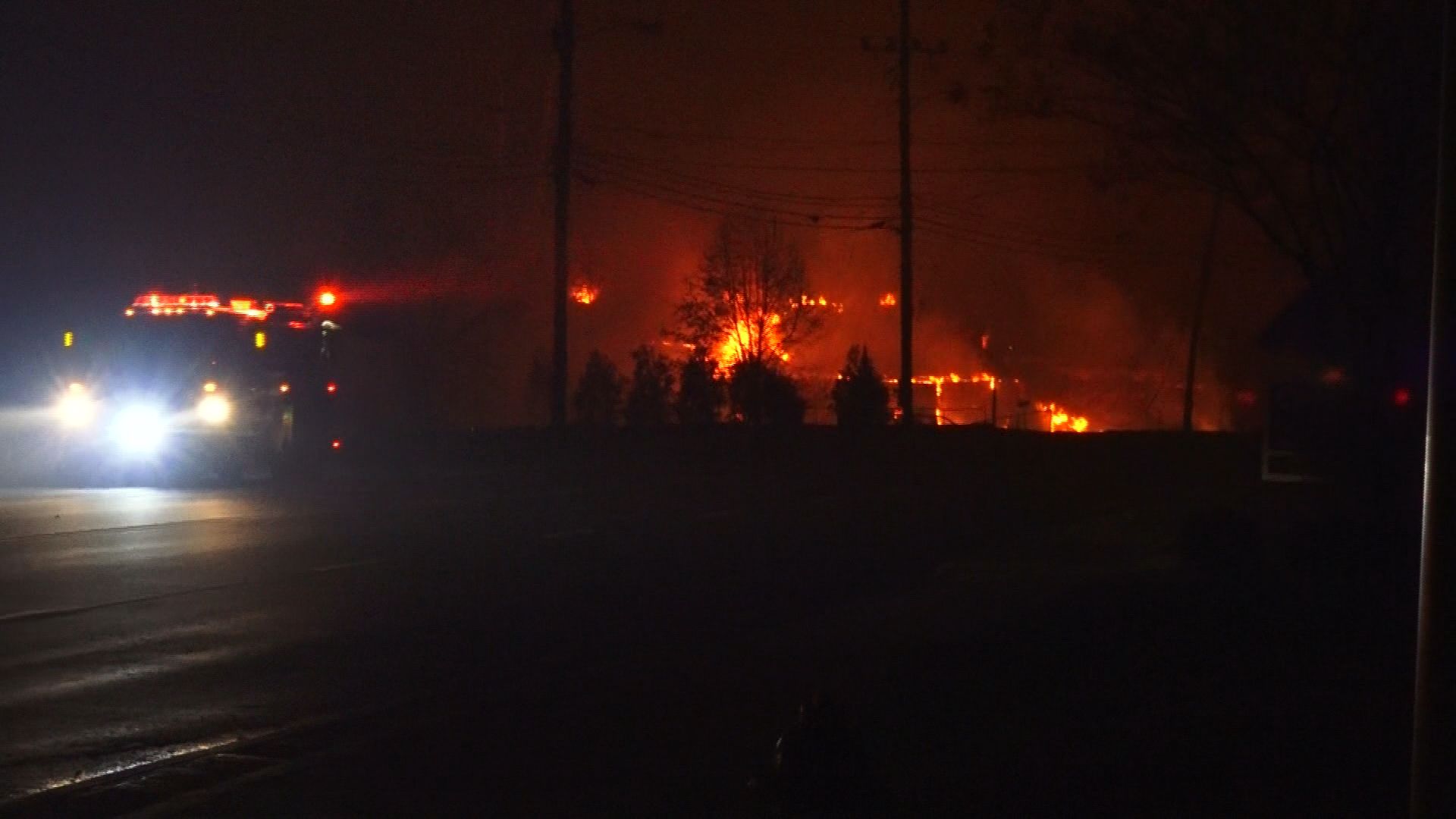
Fire crews are starting to be overwhelmed by the number and size of the fires. Just after 7:30 p.m. the Pittman Center fire chief advised dispatch her crews were pulling out of the Red Fox Trail area because there were more structure fires than they could safely control. She told dispatch to ask for state-wide mutual aid.
That dispatcher did as asked, and let her professional facade slip briefly while talking to another dispatcher.
"I'm on the verge of tears right now. I'm praying," she said. "The Pittman Center Fire Department is having to pull out because fire is overtaken them. I'm listening to them and only them to make sure they get out okay."
By 7:30 p.m., 911 callers were advising they were facing a firestorm as they were trying to evacuate.
"I'm fleeing my house right now," said a caller from Forest Springs Drive. "The road is on fire."
"Can you get out?" asked the dispatcher.
"I'm trying," he said.
Other people were calling and asking for someone to come get them, either because they didn't know the area or the roads were blocked. Many asked where they should go.
A woman who was obviously not a local called 911 from the Spur, which was surrounded by fire that evening. She said, "I'm trying to get out of Gatlinburg. Am I supposed to stay on this road? Traffic isn't moving."
Dispatchers had earlier advised that people were using both sides of the Spur, even traveling the wrong direction, to escape the fires and head to Pigeon Forge.
Shortly after 7:30 p.m., dispatchers were advising everyone that called about a fire to evacuate. They were told to earlier go the community center or to Pigeon Forge.
Many callers were getting increasingly desperate.
"There's fire all around, we're going to have to run," said one man, calling from Sourwood Drive. He said there were flames all around. "Gotta go, gotta go, it's moving fast."
At 7:35 p.m., a dispatcher advises a caller that they are evacuating Gatlinburg right now, saying there were more than 25 fires burning at the time.
In the next few hours, fires are reported in many of the areas that were devastated by fire.
Fire crews reported all of the structures around the Park Vista hotel were gone, and that they advised anyone at the hotel to stay there because they couldn't reach them. Homes were burning on Ski Mountain Road, in Westgate Resort and on Wiley Oakley Drive.
Multiple calls came from the Highland Condominiums, which were destroyed, along with the Riverhouse Motor Lodge.
Dispatchers answered hundreds of calls, one right after the other, doing their best to get the correct information and calm fears.
The people trying to evacuate encountered multiple obstacles. Roads were blocked and surrounded by fire, it was hard to see, and smoke filled the air. Many roads were at a complete standstill, including the Spur heading to Pigeon Forge.
As the night progressed and the situation continued to get worse, some people were advised to stay where they were if the fire wasn't close.
“If you do not feel threatened at this second, stay in the cabin as long as you can, because the whole road is blocked,” one caller was told.
Chaos and confusion reigned into the night, as dispatchers took calls from more and more terrified people, many of them were trapped in their homes or cars, and surrounded by fire. All of them asked what they should do.
With emergency crews stretched to their limit and scattered across the county, battling up to thirty separate fires, the best advice dispatchers gave callers was to do whatever they had to do to get themselves to safety.
"We’re in a car and there’s fire before us and behind us, one caller said. “We’ve got fire all around us.”
"The fire is on the road now. We can’t get out,” another said. When the dispatcher asked if they could evacuate on foot, she answered, "No. We have elderly people and a baby. Please, please, send help"
One caller made it out, but called to see if anyone could help the animals she had to leave behind. "Please let them know, there are livestock, pets, we couldn’t get them out. We barely got out.”
Another woman was trapped in a car after fleeing theirrental cabin with her family, With trees and fire blocking the roads, she begged for someone to come help them. When the dispatcher told her they would try to get someone there but it wouldn't be immediately, she sobbed, "So there's nothing we can do but site in the car and die?"
Emergency crews were doing everything they could. By this point, fire was engulfing more than a thousand acres, mostly around Gatlinburg, but also in parts of Pigeon Forge and Wears Valley. They were trying to answer calls for help, but they were also blocked by fallen trees and power lines, and it was taking time to cut their way through.
The intense flames and heat even forced first responders to evacuate. At 8:16, the order came for all crews to get out of the Wiley Oakley Road area because it was too dangerous. Just a few minutes later, at 8:19, the same order came for crews on Ski Mountain Road.
A fire crew along Valley View Lane, in the mountains above the Spur, reported they had 4-5 structures on fire at 8:22, but they had no water to fight the flames and were going to evacuate. The command center's response was immediate. "Evacuate what you can and get yourself out."
By 8:23, fire crews were reporting that much of the area around the Park Vista hotel was lost, including apartments and a church. They warned that the fire had jumped over the Parkway and was working it's way up Ski Mountain.
Gatlinburg records show fire’s force
City of Gatlinburg documents also reveal the extent of the disaster as the fire moved from the Great Smoky Mountains National Park toward downtown Gatlinburg.
Some people began to notice ash falling in the city the morning of Nov. 28, 2016, records show. The reason: the arson that had been set Nov. 23 on the Chimney Tops Trail had started to spread overnight, moving closer to the town through the park after several days in which it remained concentrated at the trail site.
Fire officials called their National Park Service counterparts and learned the Chimney Tops blaze had grown to over 500 acres from Sunday night into Monday morning. Spot fires were beginning to break out elsewhere, documents show.
Rising winds had prohibited crews from using aircraft to fight the fire from the air. Scouts also couldn’t get aloft because of gusts, documents show.
But the main fire, burning at about 5,300 feet in the park, still was some eight miles away from Gatlinburg, according to a report.
Local authorities offered the Park Service help, according to records. They advised, however, that “none was needed at the moment but to be ready and to stand by at our stations in case we were needed later,” a revised incident summary shows.
Conditions, however, just got worse.
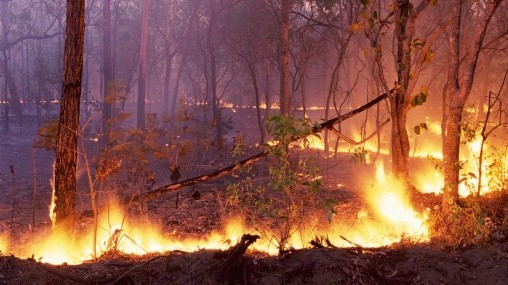
The Twin Creeks area near Cherokee Orchard Road was the first spot that appeared vulnerable to the advancing blaze. Shortly before noon that Monday crews found moderate smoke and falling ash but no visible flames.
Mutual aid was sought early in the afternoon from the Caton’s Chapel and Pigeon Forge fire departments.
National Park authorities met up with Gatlinburg leaders including Fire Chief Greg Miller and Police Chief Randall Brackins. Because of the threat of fire, authorities agreed to call for a “wild land task force activation” and put all staff and resources on alert in case fire moved toward the town.
The main fire still was about a mile or two away from the city limits.
The fire, however, would not stop. Winds picked up and shifted, according to documents.
Flames advanced in the afternoon toward Mynatt Park. Residents were encouraged to get out.
Crews dug hand lines along the park boundary and potential fire fuel was cleared from around structures as a precautionary move.
It appeared the fire, driven by winds, jumped over firefighters stationed at Twin Creeks and hit a ridge to the north, according to records.
By now visibility had become poor in the park. Records state that park officials were having trouble determining how big the fire was on park land and just how it was behaving.
“Access was limited without hiking into the fire, which was not safe by not having an accurate size up. Plan was to enforce border around city limits, reduce fuel load, and prep structures so that when the slowing back fire approached the city limits, it would run out of fuel and be met with ample suppression,” the fire summary states.
But the fire – and the weather – had other ideas.
By 5 p.m. winds had picked up and fire had begun to approach the city. A downdraft hit from the mountains, further accelerating the blaze. Airborne embers spread the fire beyond fire lines.
The inferno began to pick up speed as 7 p.m. approached.
“High winds had now pushed throughout the city, raining embers, causing trees and power lines to fall and fire to spread,” the post-fire summary report states. “Numerous calls were received from brush and structure fires in various parts of the city and county areas.”

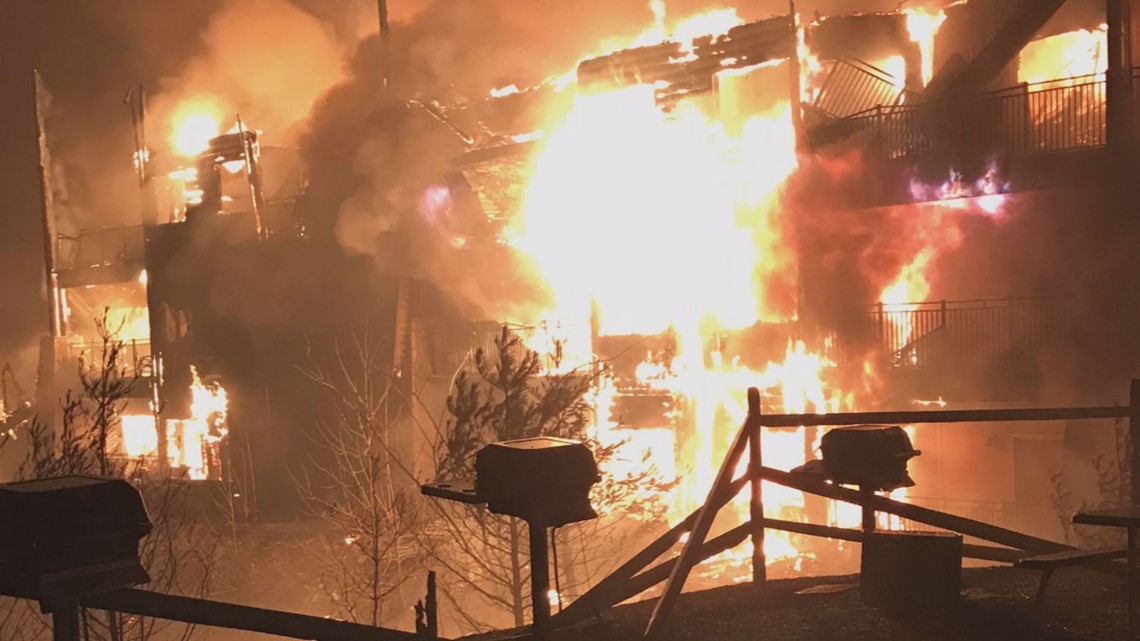
Officials were told to activate a flood warning siren system as a means of getting the public’s attention. They also began widespread evacuations.
The town’s trolley system was used to haul people to safe ground at the community center. Help from outside the county was sought.
Fires now were being reported all around Gatlinburg, even to the northwest in the Ski Mountain area along the park bypass.
People called in to report they were trapped by trees and power lines. Some were stuck in vehicles on roads and couldn’t get down to safety. Power lines crashed to the ground throughout the area, so many that fire crews couldn’t keep up with their locale.
Natural gas service was halted for all of Gatlinburg.
According to one official’s report, “I considered the termination of electric services as well since we were trapped with downed power lines but reconsidered because it would cut off illumination to roadways for evacuees and public works.”
By now at least 30 active, independent fires were burning – in places like Dudley Creek, Turkey Nest, Davenport, Chalet Village, Cove Mountain, Wiley Oakley and Baskins Creek.
“We had received countless calls for people trapped inside their homes or cars,” the summary report states. “Crews continually worked to locate callers and remove them to safety. We had reports of people trapped in the elevators in the buildings at the top of Westgate Resorts. Crews were sent multiple times and were blocked by debris and obstructions each time and were unable to reach them for hours.”
It wasn’t until around 11 p.m. that winds finally began to die down. Rain began to fall.
The state Department of Transportation used a wheel loader to clear off debris so crews could reach people who’d been trapped high up on Gatlinburg roads.
At the massive Westgate Resort up above the town, responders got a call from an older couple who were trapped in an elevator in a building at the top of the hill.
Fourteen people died late Nov. 28 and early Nov. 29 as a result of the fire. But the people stuck in the Westgate elevator got out. Crews pushed through debris, located the couple in an elevator stuck between the third and fourth floors and took them away to get medical attention, according to records.
Rains helped put out the bulk of the fires. But for the town of Gatlinburg and its residents, the disaster was far from over. They faced days and weeks of recovery. Some, of course, are still trying to recover.
10News will continue to update this story as we finish examining the documents and other records. Please check back.

